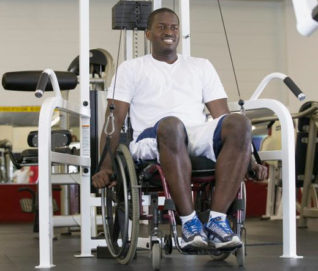People with physical disabilities can, and should, participate in a well-structured strength training program, which increases muscle size, improves muscle endurance and prevents bone loss. In addition to making one stronger, strength training with disability also helps prevent injuries.
Strength training with disability uses some form of resistance to strengthen and build muscle. There are three modes creating resistance for strength training with disability – free weights, resistance bands and weight machines. Only two or three 20- to 30-minute weight training sessions per week are recommended.
Equipment for Strength Training
Free Weights
Free weights Include dumbbells, barbells, medicine balls, sandbells and kettlebells. With free weights, your body has to work to support the weight and control the movement. This means that multiple muscles must be engaged for stabilization and to control your movements.
Disability Gym Workout – free weights (4:04)
Resistance Bands
Resistance bands are made of strong rubber in thin sheets, tubing or bands and come with and without handles. They allow you to do almost any kind of strength training exercise without weights.
Band Exercises in Wheelchair (1:00)
Weight Machines
Weight machines are designed to enforce good technique by placing your body in the optimal position to target a specific muscle group during a specific exercise. They also add an element of safety, because weight machines virtually eliminate the danger of dropping a weight, sending a taut band flying or of injuring yourself with poor technique or too much weight.
Disability Gym workout: Weight Machines (3:44)
Learn more about getting started with a disabled exercise routine.


Leave a Reply